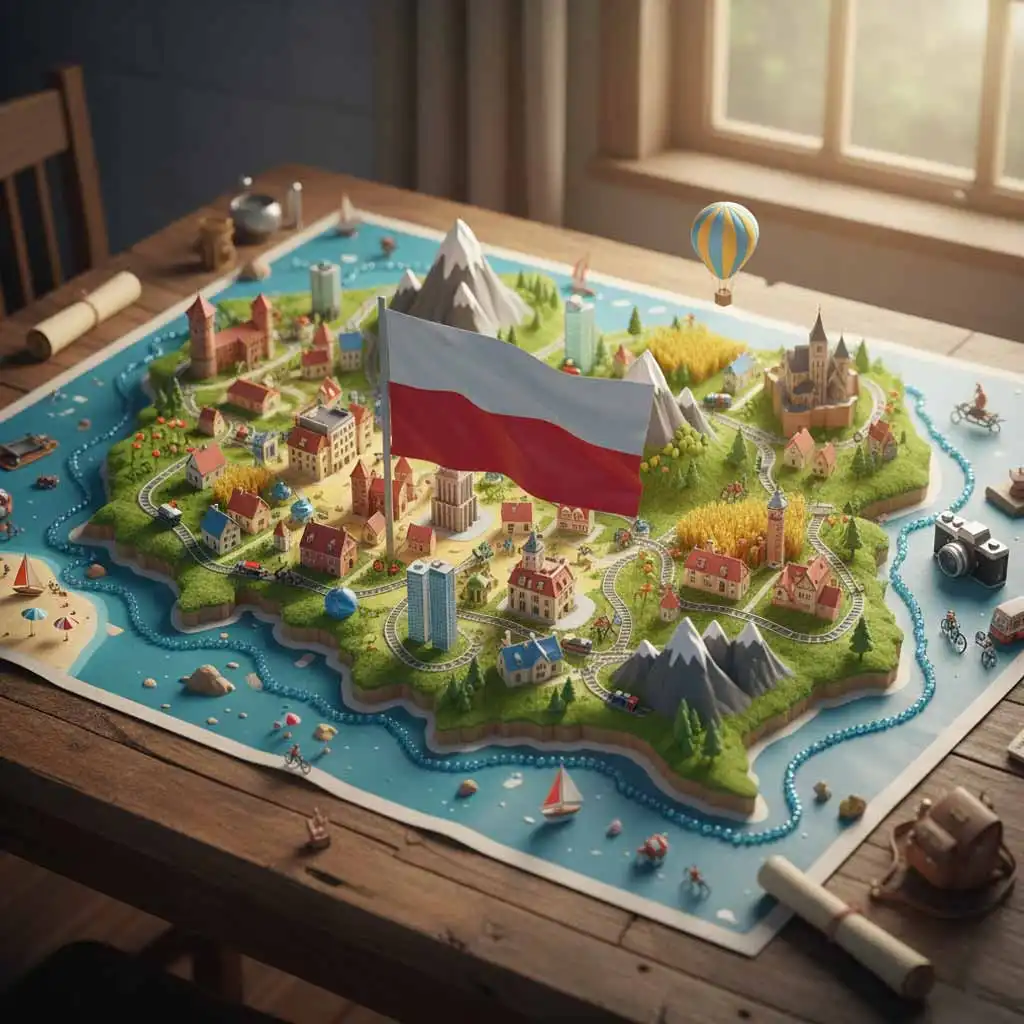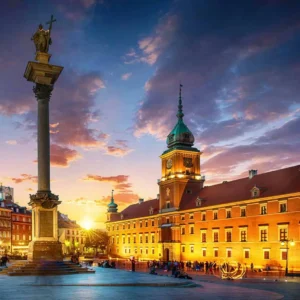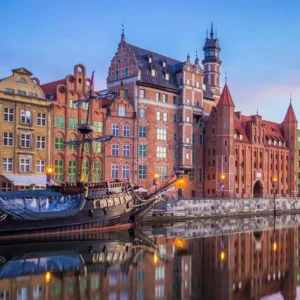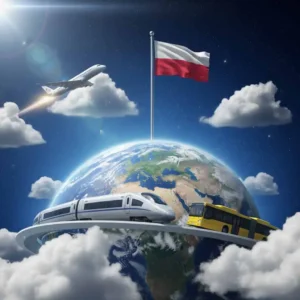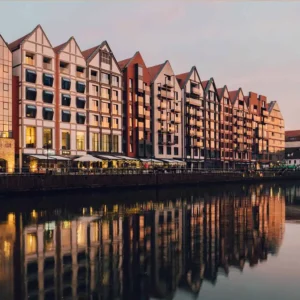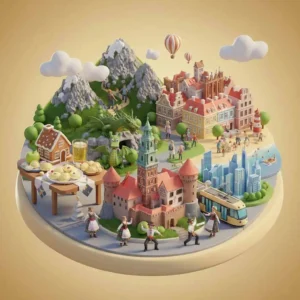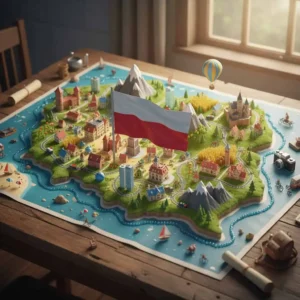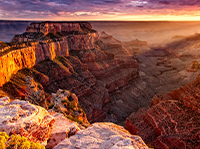Poland Travel Map introduction
Planning a trip to Poland is like unfolding a vast, beautifully detailed map. This country, at the crossroads of Central and Eastern Europe, offers an incredible array of destinations, from bustling historic capitals to serene natural landscapes. This article serves as a comprehensive Poland travel map, designed to help you navigate this diverse nation and plot a logical, unforgettable itinerary. We will not delve into the granular details of how to book a flight or what to eat, as those topics are covered in our other dedicated articles. Instead, we provide a high-level, geographical overview of Poland’s most compelling regions and the key attractions within them. This guide will give you a clear sense of the country’s layout, allowing you to string together a journey that is both efficient and rich in experience, whether your interests lie in profound history, vibrant culture, or untouched nature.
Navigating Poland with a geographical mindset is the most effective way to see the country. By understanding the location of key cities, mountain ranges, and coastal areas, you can create a seamless travel plan that minimizes transit time and maximizes exploration. Think of this guide as the central blueprint for your Polish adventure. Each section acts as a region on your map, filled with must-see destinations and a sense of what makes each area unique. This approach helps you visualize your journey, making it simple to connect the dots between your desired stops.
Your Interactive Poland Travel Map for Every Adventure
Poland’s geography is a fascinating blend of coastal plains in the north, rolling lowlands in the center, and dramatic mountain ranges in the south. As a result of this diversity, a single trip can offer a wide range of experiences, from sunbathing on Baltic beaches to hiking in the rugged Tatra Mountains. Consequently, our interactive Poland travel map is structured to highlight this variety, presenting the country’s main regions as distinct chapters in your travel story. In essence, each region is a world unto itself, with its own unique personality. In fact, a journey from the industrial south to the serene north reveals a nation of remarkable and inspiring differences. The sheer variety of landscapes and historical narratives found in each area is, moreover, quite impressive. Ultimately, you will find that understanding these regions provides the necessary context for a deeper travel experience.
An Overview of Poland’s Diverse Regions: More Than Just Warsaw and Krakow
While Warsaw and Krakow are essential stops for any traveler, a true appreciation of Poland comes from exploring its regional contrasts. The country is a patchwork of five distinct geographic zones, each with a unique personality. A journey from the industrial south to the serene north reveals a nation of remarkable and inspiring differences. The sheer variety of landscapes and historical narratives found in each area is impressive. You will find that understanding these regions provides the necessary context for a deeper travel experience.
Northern Poland: The Baltic Coast & Lakes
This region is defined by the expansive Baltic Sea coastline and the sprawling Masurian Lake District. Gdansk, a stunning Hanseatic city, stands as the cultural heart of the coast. Its meticulously reconstructed Old Town and historic shipyards tell a powerful story of trade and resilience. The nearby Tri-City area, which includes the seaside resort of Sopot and the port of Gdynia, offers a vibrant urban experience. A little further inland, the Masurian Lake District provides a peaceful escape with thousands of interconnected lakes, making it a haven for sailing and kayaking.
Central Poland: The Heart of History
At the core of Poland lies its historical and political center. Warsaw, the capital, is a city of remarkable rebirth, its skyline a mix of meticulously rebuilt medieval architecture and striking modern skyscrapers. The capital is the nation’s most populous city and a hub of culture and business. Another key city is Toruń, a UNESCO World Heritage Site known for its remarkably preserved medieval architecture and strong ties to astronomer Nicolaus Copernicus. This region tells the story of Poland’s resilience and its journey into the modern era.
Southern Poland: Mountains, Culture & History
Southern Poland is arguably the country’s most popular and visually stunning region. Krakow, the former royal capital, is a masterpiece of medieval urban planning. It is home to the largest market square in Europe and the majestic Wawel Royal Castle. The region also includes the breathtaking Tatra Mountains, Poland’s only alpine range. The mountain resort town of Zakopane serves as a gateway to this spectacular landscape. The south offers a powerful combination of profound history and dramatic natural beauty, making it a top destination for travelers.
Western Poland: A Blend of German and Polish Heritage
The cities of Western Poland, like Wrocław and Poznań, reflect a rich blend of Polish and German influences. Wrocław, often called the “Venice of the North” due to its numerous islands and bridges, is a city of bridges, dwarfs, and vibrant culture. Poznań, the cradle of the Polish state, is a hub of history and trade. This region provides a unique architectural and cultural experience that stands apart from the rest of the country.
Eastern Poland: Untouched Nature and Unique Traditions
Eastern Poland remains one of the country’s most wild and pristine regions. It is a land of sprawling forests, including the ancient Białowieża Forest, home to the European bison. The region’s major cities, such as Lublin, offer beautiful historic centers with a distinct, quiet charm. This area provides a glimpse into a more rural and traditional way of life, with a unique blend of Polish, Ukrainian, and Belarusian cultures.
Poland Travel Map by Region: Must-See Destinations
This detailed section of our Poland travel map goes beyond general descriptions and provides a pinpoint guide to the most significant cities and landmarks. Each entry is designed to showcase the character of the place and its main attractions, helping you decide where to focus your time and energy. We’ve compiled the best information to help you get the most out of your visit.
Warsaw: The Resilient Capital on the Map
Warsaw is a city that refused to die. After being almost completely leveled in World War II, it was rebuilt with incredible dedication. This story of resilience is a central part of the city’s identity.
Warsaw Old Town: A UNESCO World Heritage Site
Warsaw’s Old Town is a testament to the Polish spirit. It was painstakingly reconstructed using historical paintings and plans, earning it a UNESCO World Heritage status. You must visit the Royal Castle and walk along the city’s famous fortifications. The Old Town Market Square, with its colorful buildings, is a perfect starting point for exploration. The area provides a beautiful and inspiring glimpse into a city’s refusal to be defeated by history.
The Warsaw Uprising Museum and POLIN Museum of the History of Polish Jews
For a deeper understanding of the city’s history, a visit to these two museums is essential. The Warsaw Uprising Museum provides a powerful and visceral account of the 1944 uprising against Nazi occupation. The POLIN Museum is an equally compelling and thought-provoking institution, chronicling the thousand-year history of Jewish life in Poland. Both are crucial to understanding the country’s modern history.
Poland Travel Map Did You Know?
The Warsaw Old Town was so thoroughly destroyed in World War II that it was declared a UNESCO World Heritage site not for its original architecture, but as a unique example of a total reconstruction of a historic area.
The Royal Route and Łazienki Park
The Royal Route is a historic path that connects the city’s royal residences. A walk along this route reveals a stunning collection of palaces, churches, and statues. At its heart is Łazienki Park, a vast green space featuring the beautiful Palace on the Isle. In the summer, free Chopin concerts are held at the composer’s monument, making it a perfect spot to relax and enjoy the atmosphere.
Krakow: The Royal City and Its Surroundings
Krakow is the cultural heart of Poland, a city that gracefully preserved its medieval architecture. It is a city that feels as if time has stood still in all the best ways. For this reason, it is one of the most beloved destinations in the country.
The Old Town & Main Market Square: A Map of Historic Beauty
Krakow’s Main Market Square (Rynek Główny) is the largest medieval market square in Europe. The square is a vibrant hub, surrounded by the iconic Cloth Hall, St. Mary’s Basilica, and countless cafes. It is the perfect place to begin your exploration of the city’s historic core. The sheer scale and beauty of the square are something that must be experienced firsthand.
Poland Travel Map Fun Fact:
Every hour, on the hour, a trumpeter plays a four-note tune, the “Hejnał Mariacki,” from the top of the taller tower of St. Mary’s Basilica. The tune is abruptly cut off in the middle as a tribute to a trumpeter who was shot while warning the city of an invading Mongol army in the 13th century.
Wawel Royal Castle and Cathedral
Perched majestically on Wawel Hill, this complex is a symbol of Polish nationhood. It includes the Wawel Royal Castle, a former residence of Polish kings, and the Wawel Cathedral, where monarchs were crowned and buried. The castle’s rooms are filled with remarkable art and artifacts. The site offers a panoramic view of the Vistula River and the city of Krakow.
The Jewish Quarter (Kazimierz): A Guide to Culture and History
Kazimierz, the former Jewish Quarter, is now a vibrant and bohemian district. It has been a significant center of Jewish culture for centuries. The area is filled with historic synagogues, Jewish cemeteries, and a thriving scene of art galleries, cafes, and restaurants. A visit to Kazimierz offers a poignant look at the neighborhood’s past while also showcasing its modern-day creative energy.
Must-See Day Trips on the Krakow Travel Map
While a full article on day trips is available on our site, two must-mention destinations are easily accessible from Krakow. The Wieliczka Salt Mine is a breathtaking underground world of chapels and sculptures carved entirely from salt. The Auschwitz-Birkenau Memorial and Museum is a sobering and essential destination for understanding the atrocities of World War II.
Gdansk: The Pearl of the Baltic Coast
Gdansk is a stunning maritime city with a rich history of trade and political change. Its picturesque Old Town is a feast for the eyes, with its tall, narrow merchant houses and canals. It is a city that tells the story of European history through its architecture and monuments.
The Old Town of Gdansk: The Long Market and Neptune’s Fountain
The heart of Gdansk is the Long Market (Długi Targ), a beautiful pedestrian street that leads to the picturesque Long Bridge. The street is lined with colorful facades and culminates at the iconic Neptune’s Fountain. You will discover many charming side streets, artisan shops, and historical gates that create a truly unique atmosphere.
The European Solidarity Centre and Westerplatte
For an understanding of modern Polish history, a visit to the European Solidarity Centre is a must. This museum chronicles the history of the Solidarity movement, which began in Gdansk and played a pivotal role in the fall of communism. A trip to the Westerplatte Peninsula, where the first shots of World War II were fired, is another powerful and historically significant experience.
Wrocław: The City of Bridges and Dwarfs
Wrocław is a charming city of islands and bridges, with a quirky and unique identity. It is a city that perfectly blends historic architecture with a vibrant, youthful spirit.
The Market Square and Ostrów Tumski (Cathedral Island)
Wrocław’s Market Square is one of the most beautiful in Poland, with its magnificent Gothic Old Town Hall. It is a lively hub of cafes and street performers. From the square, a short walk takes you to Ostrów Tumski, the oldest part of the city. This area, known as Cathedral Island, is lit by hand-lit gas lamps in the evening, creating a magical and romantic atmosphere.
Poland Travel Map Did You Know?
Wroclaw is home to a whimsical collection of over 800 small bronze dwarf statues scattered throughout the city. The statues are a nod to the “Orange Alternative,” an anti-communist protest movement in the 1980s, and finding them has become a popular tourist activity.
The Winding Trail of Wrocław’s Dwarfs
The city’s famous dwarf statues are a delightful and unique feature. What began as a subversive art movement has evolved into a full-fledged tourist attraction. You can spend hours simply wandering the streets, searching for the tiny statues. The dwarfs represent different professions and activities, from a “firefighter dwarf” to a “postman dwarf.”
Zakopane & The Tatra Mountains: Poland’s Winter Capital
Located in the far south, Zakopane is the gateway to the magnificent Tatra Mountains, a paradise for outdoor enthusiasts and lovers of alpine scenery. This region is a world away from Poland’s historic cities, offering stunning vistas and a distinct highlander culture.
A Hiking and Skiing Map of the Tatra National Park
The Tatra National Park offers an extensive network of trails for hikers and climbers of all skill levels. From the gentle valleys and lakes, like Morskie Oko, to challenging high-altitude peaks. In the winter, the area is a premier destination for skiing and snowboarding, attracting visitors from all over Europe. The region’s natural beauty is simply unmatched in Poland.
Other Essential Stops on Your Poland Travel Map
Poland’s charm extends far beyond its most famous cities. This Poland travel map highlights a few more remarkable destinations that are well worth your time and attention. These spots provide a different perspective on the country’s history and natural beauty.
Malbork Castle: The Largest Brick Castle in the World
A short trip from Gdansk, Malbork Castle is a UNESCO World Heritage site and a breathtaking sight to behold. The Teutonic Knights built this massive fortress in the 13th century, and it is the largest brick castle in the world. Exploring its sprawling grounds and detailed interiors is like stepping directly into the pages of a history book.
The Masurian Lake District: The Land of a Thousand Lakes
For those who love nature and outdoor activities, the Masurian Lake District is a perfect escape. This region in the northeast is home to over 2,000 lakes, which canals and rivers connect. It is a paradise for sailing, kayaking, and enjoying peaceful days on the water. The area’s tranquil beauty and lush forests provide a serene contrast to the country’s bustling urban centers.
Putting It All on Your Poland Travel Map
To help you get started, we have put together a few sample itineraries based on different trip durations. Use these as a foundation and adjust them to match your personal interests and pace. This final part of our Poland travel map helps you visualize your journey and create a logical flow.
A One-Week Itinerary: Highlights of Poland
This itinerary is perfect for a first-time visitor.
- Day 1-3: Arrive in Krakow. Explore the Old Town, Wawel Castle, and the Jewish Quarter.
- Day 4-5: Travel by train to Warsaw. Explore the Old Town, visit the Royal Route, and spend a day at the city’s major museums.
- Day 6-7: Take a train to Gdansk. Discover the historic Old Town and visit the European Solidarity Centre. Depart from Gdansk.
A Two-Week Itinerary: The Grand Tour
This itinerary allows you to see more of the country’s diversity.
- Week 1: Follow the one-week itinerary, spending time in Krakow and Warsaw.
- Day 8-10: From Warsaw, travel to Gdansk. Spend three days exploring Gdansk and the surrounding Tri-City area (Sopot, Gdynia). Take a half-day trip to Malbork Castle.
- Day 11-14: Travel to Wrocław. Spend a few days exploring its unique Market Square, Cathedral Island, and hunting for the famous dwarf statues. Depart from Wrocław.
A Three-Week Itinerary: The Polish Adventure
For an immersive experience, this itinerary covers a wide range of destinations.
- Week 1: Start in Krakow and explore the south, including a trip to the Tatra Mountains in Zakopane.
- Week 2: Travel north to Wrocław, explore the city, and then continue on to Warsaw for a few days.
- Week 3: Continue north to Gdansk, visit Malbork, and spend a few days in the peaceful Masurian Lake District. Finish your trip with a return to Warsaw for your flight home.
Frequently Asked Questions About a Poland Travel Map
What is the best way to travel between cities in Poland?
The Polish railway network is very efficient and is the best way to travel between major cities. For longer distances, the high-speed trains are comfortable and fast.
Which city is a good starting point for a Poland trip?
Krakow and Warsaw are both excellent starting points, as they have major international airports and trains provide great connections to the rest of the country. Your choice depends on whether you prefer to start in the cultural heart (Krakow) or the political capital (Warsaw).
Is it possible to see the entire country in one trip?
Given the country’s size and the richness of its attractions, it is not realistic to see everything in one short trip. A one- or two-week itinerary will cover the major cities, but an extended trip of three weeks or more is recommended to truly experience the regional diversity.
Do I need a physical map of Poland?
While a physical map can be helpful, a good digital map app (like Google Maps) is generally sufficient for navigation, especially in cities. The apps are highly accurate and provide real-time information on public transport.
What is the best way to learn about Poland’s history?
To truly grasp Poland’s complex history, visit the museums dedicated to specific events, such as the Warsaw Uprising Museum and the POLIN Museum. Respectfully visiting memorial sites like Auschwitz-Birkenau is also a powerful educational experience.
What are some natural attractions to include in my travel map?
The Tatra Mountains in the south and the Masurian Lake District in the north are Poland’s most stunning natural attractions. The ancient Białowieża Forest in the east is a unique and essential stop for nature lovers.
Are the regions in Poland very different from each other?
Yes, the regions of Poland are incredibly diverse. The mountainous south has a distinct highlander culture, the coastal north is influenced by its maritime history, and the western cities have a blend of Polish and German heritage. This diversity makes a multi-region trip highly rewarding.
What is the best time to plan a trip to Poland?
The shoulder seasons of spring (April-May) and autumn (September-October) are excellent for sightseeing with pleasant weather and fewer crowds. Summer is popular for festivals and outdoor activities, and winter brings the magic of Christmas markets and skiing.
What is the most scenic drive in Poland?
For breathtaking scenery, a road trip through the Tatra Mountains is highly recommended. The roads wind through dramatic mountain passes and offer spectacular views of the landscape.
What are some unique facts about Poland’s geography?
Beyond its diverse landscapes, Poland is home to Europe’s only desert (Błędów Desert) and features a unique “Crooked Forest” of oddly shaped pine trees. Furthermore, the country boasts the Hel Peninsula, a long sand spit that is a major draw for tourists.
Conclusion
Poland is a country of extraordinary depth and variety, and a well-planned trip using a geographical approach can unlock its many treasures. To that end, this Poland travel map provides the blueprint for your adventure, highlighting the most compelling destinations in each region and helping you connect the dots for a seamless journey. By understanding the unique character of each area—from the resilient heart of Warsaw to the serene lakes of Mazury—you can create a personalized itinerary that speaks to your interests. Therefore, we hope this guide serves as your trusted companion, inspiring you to explore the rich history, vibrant culture, and natural beauty that make Poland an unforgettable destination.
Back to the Polish Adventure!
Your journey is just beginning. Now that you’ve explored the secrets of this article, it’s time to return to your home base. Click the link below to dive back into our comprehensive Best Tips for Poland hub article, where you can find more incredible guides and keep planning your ultimate Polish adventure. We’ve got so much more to show you!
